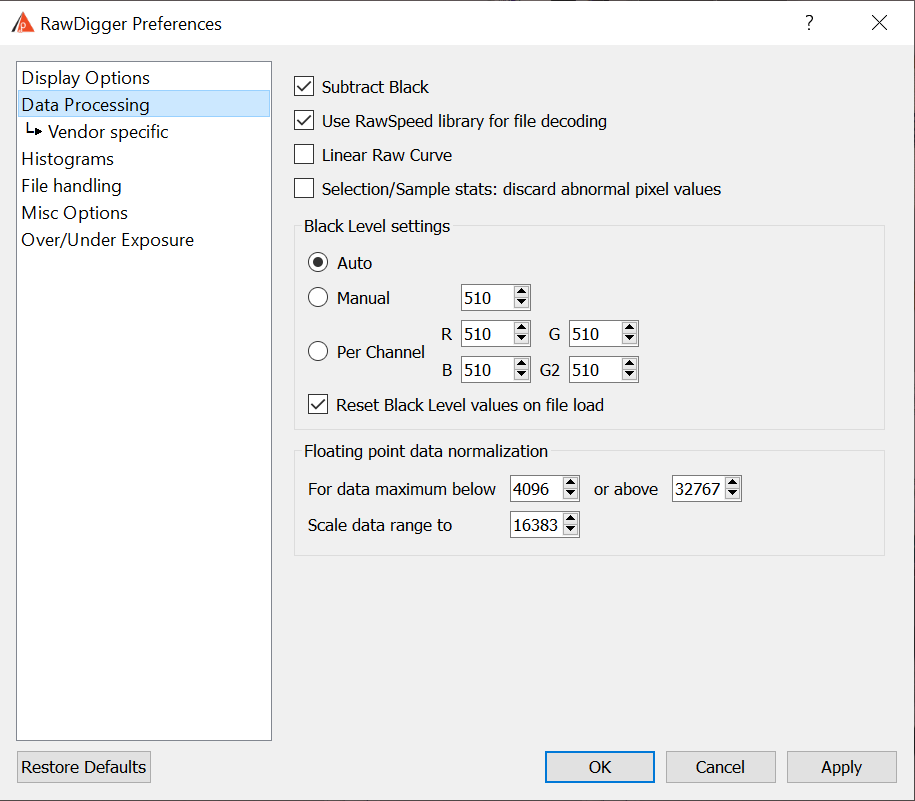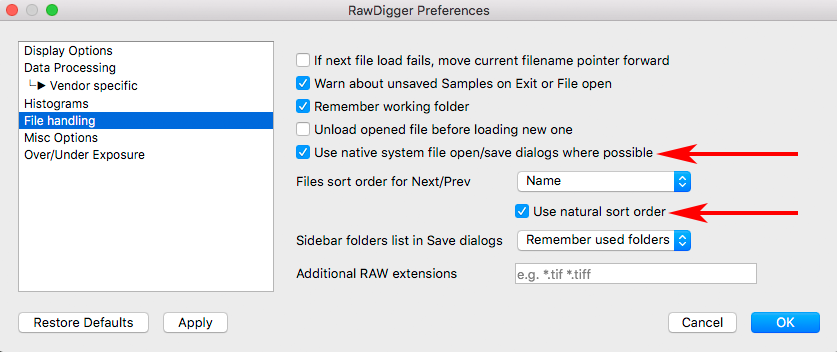

This process would be the same as a photographer purposely underexposing by two stops, using the Exposure slider in Lightroom or Aperture to add back two stops of exposure, then using the "Recovery" slider to compress the brights back down into the final image.ĭR mode is about mitigating highlights while sacrificing exposure of mid-tones and shadows.
#Rawdigger average iso
(In my example above, since there was no aperture/shutter compensation when ISO was increased, the DR 200 shot would now appear one stop overexposed, and the DR 400 would appear two stops overexposed, even though they are identical in RAW format.) Then, in JPG development / RAW conversion the results are pushed back up a stop or two (DR 200 and DR 400 respectively) to effect the ISO equivalent the exposure was metered at, and the bright tones are "recovered" by the same amount. To validate the test I shot a sequence at ISO 800 as well (with aperture closed down two stops to compensate): Because there are so many variations in the upper stops of light they can be described as "creamy" with smooth transitions from one color to another, whereas colors deep in the shadows with few variations can be describe as "crunchy." The effect is that tones in the upper-most stop of light can be described by nearly 1500 different variations, whereas tones in the lowest measured stop of light can only be described by two possible values - on or off.

In the RAW format, black starts at the value of 255. The values and histogram are from the green raw channel, with 255 subtracted out.


 0 kommentar(er)
0 kommentar(er)
